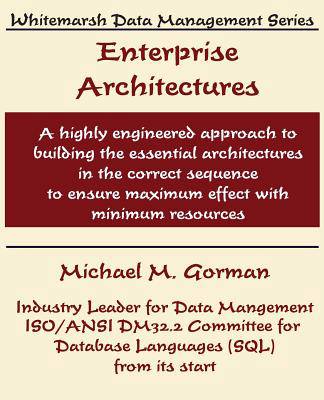
- Afhalen na 1 uur in een winkel met voorraad
- Gratis thuislevering in België vanaf € 30
- Ruim aanbod met 7 miljoen producten
- Afhalen na 1 uur in een winkel met voorraad
- Gratis thuislevering in België vanaf € 30
- Ruim aanbod met 7 miljoen producten
Zoeken
Omschrijving
Enterprises grow, stagnate, or even die by the quality of their archtiectures. May businesses have inappropriate or even wrong information systems technology because these technologies are not properly engineered. The first step is to understand that many businesses are built on the knowledge worker. A framework for the knowledge worker is important. Within this framework exists five critical architectures: the Enterprise's Archiecture, the Database Objects Archtiecture, the Data Architecture, the Resource Life Cycle Architecture, and the Information Systems Planning Architecture. These five architectures overlap and are interlinked. If the work products created for these architectures stand alone, much time and resources will have been wasted. A Metadata management systems is critical to interrelate these architectures thus making their work products non redundant. Properly engineered, these architectures enable the enterprise to thrive and to be able to change in the face of business adversity and changing technologies. This books sets out the five architectures, shows the interrelationships among all the work products and describes the metadata repository system needed to be successful.
Specificaties
Betrokkenen
- Auteur(s):
- Uitgeverij:
Inhoud
- Aantal bladzijden:
- 260
- Taal:
- Engels
Eigenschappen
- Productcode (EAN):
- 9780978996826
- Verschijningsdatum:
- 1/05/2007
- Uitvoering:
- Paperback
- Formaat:
- Trade paperback (VS)
- Afmetingen:
- 191 mm x 235 mm
- Gewicht:
- 453 g

Alleen bij Standaard Boekhandel
+ 194 punten op je klantenkaart van Standaard Boekhandel
Beoordelingen
We publiceren alleen reviews die voldoen aan de voorwaarden voor reviews. Bekijk onze voorwaarden voor reviews.











